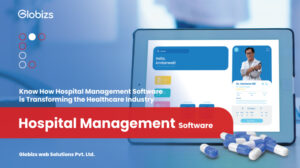Hospital Information System: Making the process simpler
A Hospital Information System (HIS) is basically an information management system for the use in hospitals, clinics or any other institutional set up where medical assistance is provided. Hospitals generate a huge amount of data every day, round the clock, 365 days a year. This information once managed in a systematic way can ensure in the efficient functioning of the institute. Patients visit the hospital in the form of outpatient treatments or emergency care, or get admitted for a short duration, say a few hours or long duration, say for weeks or months or indefinitely.
Hospital Information System in the past usually dealt mostly with the revenue management aspects, but there has been a shift in the trend recently. Emphasis has been laid on improving the overall performance and management of the institute. Also, it can be noted that the requirements of the system can depend on the sizes or speciality of the different departments of the establishment.
Important HIS Aspects to Consider Requirements Management
First and foremost thing that needs to be done in order to develop a Hospital Information System is requirement gatherings. As the process and system of hospitals are intricately expansive the requirement gatherings need to be performed comprehensively with proper analysis as to how such a system will impact the overall business process. And in the process, identify the areas which will be directly affected or in varying degrees by the implementation of such a system. As such a blueprint should be prepared first hand and a vision document.
Workshops and focused meetings should be conducted for the stakeholders and the people directly involved in the process to validate the requirements and expectations of the various departments and agencies.
Once the above is agreed upon then only the software requirements and the specifications should be finalized. And hence the design documents should be prepared with proper consideration of the functionality. It should then be passed on to the design team to analyse the design implementation in the development process.
Change Management
As an introduction of a new information system, is challenging in itself, care should be taken. A certain change management process prior to the implementation of the system should be in place to train and mentored the staff as the system means a new working system.
The people who are directly going to interact with the system needs training and hand-holding to get themselves acquainted with the system. This will make their job easier and transformation from the old system to the new one, most adaptable. As such implementation of new systems means the elimination of certain outdated process, unaltering few and others goes through major and minor changes. The new system will completely redesign the entire business process and establishment. Eventually, the new system will assimilate to the entire process and create a new way of working.
The change in the ways of working should be sustainable enough to benefit the establishment as a whole.
Hospital Information System General Requirements– An Overview
Globizs, as an IT leader, helps its clients in going through the transformation by designing and developing software that helps increase the productivity of the establishment as a whole. Our software is safe and secure. We take data management, privacy and security of our clients as a priority. The design and development of the software are taken up with due consideration for adaptability and flexibility from a users perspective.
Our software development process for Hospital Information System takes into consideration, the following below points which helps us in delivering value for money and satisfaction to our clients:
- Create a unique patient identifier like UHID (unique health identifier).
- Quick registration for the emergency patient. – use of “break-the-glass feature”, with a due record of who did what, when and why (the reason for this action).
- Data security, patient confidentiality and privacy.
- Role-based user access control.
- e-prescriptions for outpatients, Computerized physician order entry (CPOE) for others.
- Electronic Medical Record (EMR), Laboratory Information System (LIS), Radiology Information Record (RIS), Picture archiving and communication system (PACs).
- Secured remote access to view information and add notes.
- Medicine and Medical equipment records. EOQ and re-order level to keep a check on expiration and maintain inventory level at all times.
- Barcoding for tracking patients, services, material and medication.
- MIS reports.
To learn more log on to http://globizs.com


